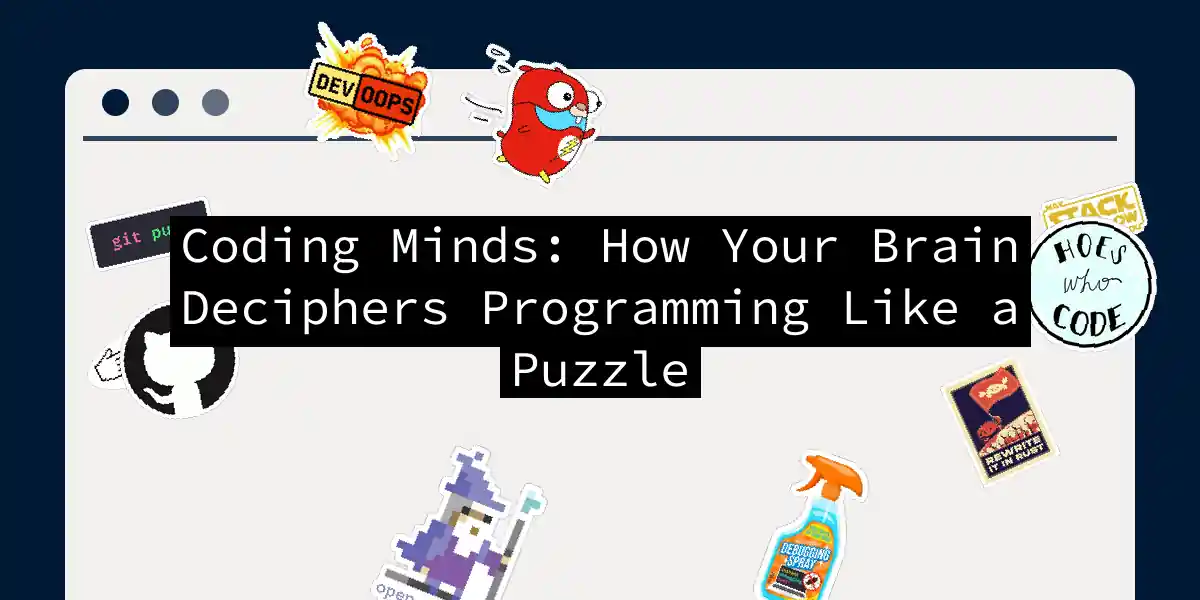Ever wonder why debugging feels like hunting for a needle in a quantum haystack? Or why you finally grasp recursion at 2 AM while your brain screams “why now?!”? Programming isn’t just typing—it’s a cognitive obstacle course where your neurons juggle logic, frustration, and occasional triumph. Let’s dissect how your wetware processes code, with practical experiments you can try right now.
Cognitive Mechanics of Code Processing
Your brain tackles programming through three intertwined phases:
- Understanding: Deconstructing problems into basic elements
- Method-Finding: Strategizing solutions like a chess player
- Coding: Translating strategy into syntax Try this exercise:
def cognitive_load_demo(data):
# Phase 1: Understand - What's the goal?
# Phase 2: Method - How to transform data?
transformed = [x * 2 for x in data if x % 2 == 0]
# Phase 3: Code - Write the logic
return transformed
Run it with cognitive_load_demo([1,2,3,4]). Notice how your brain sequentially navigates comprehension (filter evens), strategy (doubling), and implementation (list comprehension). This mirrors cognitive psychology’s model where distinct mental resources handle each phase.
When Neurons Fight Code
Programming demands extreme cognitive gymnastics:
- Abstract Reasoning: Visualizing
std::vector<std::map<std::string, int>>as nested Russian dolls - Symbolic Interpretation: Decoding
() => {}as “empty function” not “confused punctuation” - Mental Simulation: Mentally executing loops before runtime
// Cognitive friction example:
const matrixTraversal = (grid) => {
let sum = 0;
for (let y = 0; y < grid.length; y++) {
for (let x = 0; x < grid[y].length; x++) {
if (x === y) sum += grid[y][x];
}
}
return sum;
};
Step-by-step debugging for your brain:
- Sketch a 3x3 grid on paper
- Manually trace coordinates where x=y (diagonal)
- Calculate sum
- Now compare to code execution
This manual simulation lights up your visuospatial cortex—the same region that helps you navigate physical spaces. When stuck, revert to paper: it offloads working memory.
Cognitive Short Circuits (and Fixes)
Ever spent hours debugging only to find a missing semicolon? That’s cognitive tunneling—your prefrontal cortex fixates while ignoring alternatives. Combat this with:
Pro cognitive hacks:
- Pomodoro for neurons: 25-minute focused sprints followed by 5-minute walks (neuroplasticity loves movement)
- Error-driven learning: Intentionally write buggy code, then fix it. Example:
# Bug hunt challenge:
def factorial(n):
return n * factorial(n-1) # Missing base case!
- Interleaved practice: Alternate between coding tasks and unrelated puzzles to strengthen cognitive flexibility
Emotional Side of Syntax
That “I’m a fraud” feeling when code won’t compile? Programmer’s amygdala responds to errors like physical threats. Counteract with:
# Emotional debugger function
def handle_imposter_syndrome():
print("This is normal cognitive dissonance.")
print("Step away. Hydrate. Return with fresh synapses.")
return confidence.reboot()
Neuro-tips:
- Burnout vaccine: Track “cognitive wins” daily—even small fixes count
- Pair programming bonus: Explaining code activates different neural pathways than writing solo
Optimizing Your Wetware Compiler
Just as we refactor code, we can refactor cognition:
- Chunking: Group related concepts (e.g., learn REST verbs together: GET/POST/PUT/DELETE)
- Pattern recognition drill: Identify common algorithms in daily life (sorting laundry = bubble sort)
- Cognitive testing: Solve
codingbat.comproblems under time constraints
Advanced brain refactoring:
def cognitive_refactor(task):
# Before: Monolithic approach
# result = massive_function(task)
# After: Chunked processing
parsed_input = parser(task)
processed_data = processor(parsed_input)
return output_formatter(processed_data)
This mirrors how your brain compartmentalizes tasks—transforming “overwhelming problem” into manageable subroutines. Your brain on code resembles a overclocked CPU with emotional RAM—sometimes it throttles, sometimes it blue-screens, but with deliberate practice, you’ll upgrade your neural architecture. Now if you’ll excuse me, I need to explain my coffee dependency to a rubber duck…
